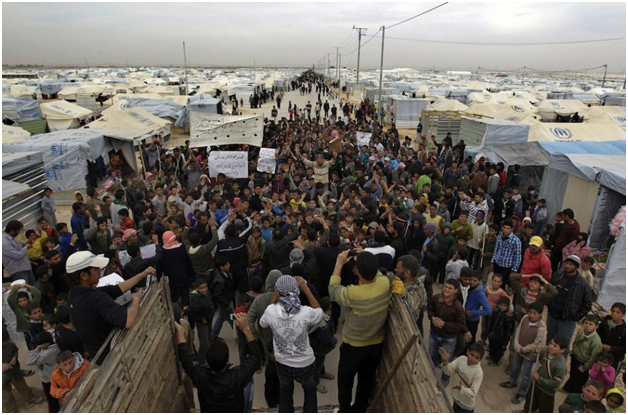What if Manhattan Was Syria?
Syrian refugees, displaced by the millions without food and aid
NEW DELHI: Millions of people have been forced to flee their homes in Syria, leading to a major humanitarian crisis as food and aid are in short supply. Although the UN World Food Programme has moved to restart food aid for 1.7 million Syrian refugees in Jordan, Lebanon, Turkey, Iraq and Egypt after it received enough donations to fund the suspended programme, the crisis is evinced by the WFP’s announcement a few weeks ago that it was partially suspending food aid due to a funding crisis. This meant that food vouchers would be cut for Syrian refugees living outside refugee camps in neighbouring countries.
Although the agency’s fundraising drive enabled it to raise $80 million, the scale of the disaster is not easy to comprehend unless you are there to witness it. Try to image what it would be like if every single person in a major city such as Manhattan, London, New Delhi or Mumbai, fled their homes.
UNHCR along with the Hamdi Foundation have produced a video to provide an insight into the scale of the disaster. The video, titled "What if Manhattan..." asks: How would the world respond if the refugee crisis affecting the children of Syria were happening to the people of Manhattan.
As the video points out, 1.5 million of those affected are children. Children displaced by the war in Syria are the focus of another advocacy video -- produced by Save The Children -- that says, "Just because it isn't happening here, doesn't mean it isn't happening."
The video was released to mark the three-year anniversary of the conflict, in which, to date, 10,000 children have lost their lives and 2.3 million people have become refugees.
In a report titled “A Devastating Toll: The Impact of Three Years of War on the Health of Syria’s Children” by Save The Children, the broken health system in Syria and its consequences -- children dying not just from violence but also from related diseases -- were highlighted.
The report highlights the impact of the Syrian civil war on the country’s children. At least 1.2 million children have fled the conflict, and become refugees in neighbouring countries, while another 4.3 million children in Syria are in need of humanitarian assistance. Children have witnessed and experienced extreme violence, and more than 10,000 young lives have been lost as a direct result. The report draws attention to risk to life not just directly posed by violence, but also treatable and preventable diseases. Two hundred thousand Syrians have died of treatable chronic diseases such as cancer, asthma and diabetes – double the number killed by violence, states the report.
The illnesses affecting children in the troubled state include measles, diarrhea, and respiratory illnesses, all among the most deadly diseases worldwide for children aged under five. As one measure of how far Syria's health systems have fallen, the report states, in 2010, a total of 26 measles cases were reported in the whole of Syria for the entire year. In the first week of 2014, just in children aged under five, 84 cases were recorded in northern Syria alone.
Sixty percent of hospitals and 38 percent of primary health facilities throughout Syria are damaged or destroyed, making access to healthcare a key area of concern. Nearly half of Syria’s doctors have fled the country. Of the country's ambulances, 93 per cent have been damaged, stolen or destroyed, while many health workers and medical staff have been killed, imprisoned, or have fled the country altogether. The production of drugs has fallen by 70 percent. “This is more than a crisis. It is the threatened collapse of an entire health system, which endangers the lives and well-being of millions of children,” the report states.
The report states that vaccine programmes in Syria have collapsed, with a peacetime coverage rate of 91% falling to 68% just a year after the conflict began; “this rate is likely to be far lower today,” it states. Deadly diseases like measles and meningitis are on the rise. Even polio, which was eradicated across Syria in 1995, is now being carried by up to 80,000 children across the country.
Even despite the scale of the tragedy, groups are still trying to raise awareness and aid.





